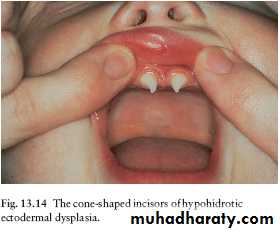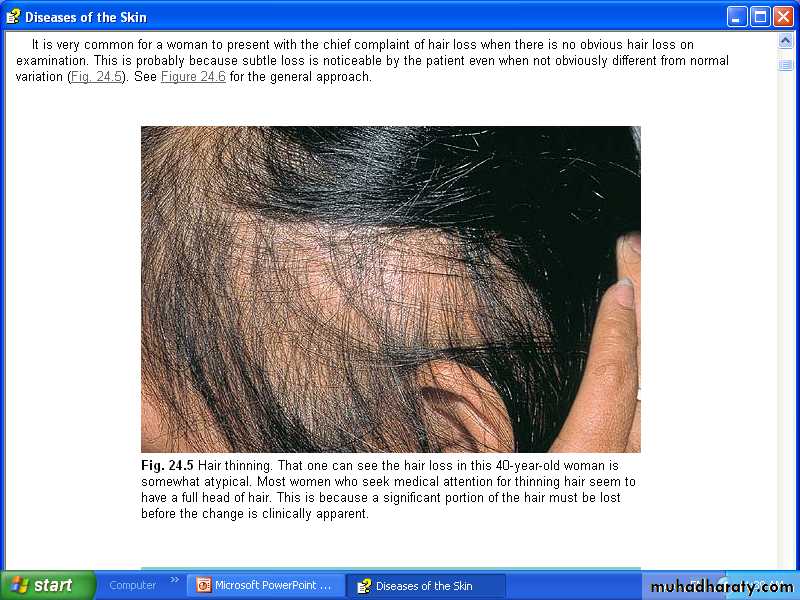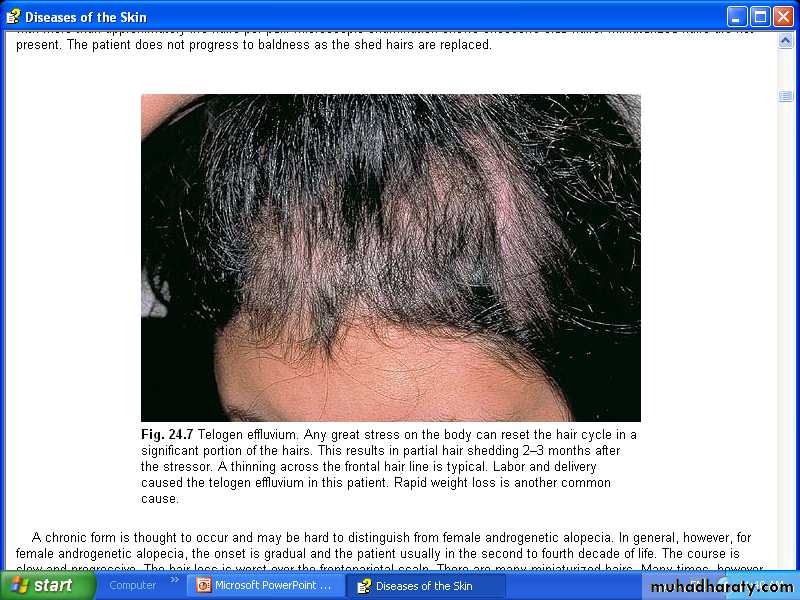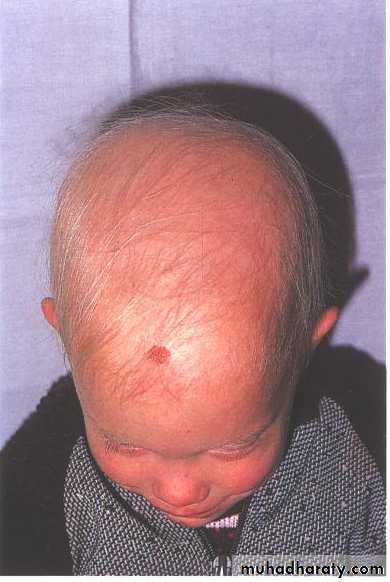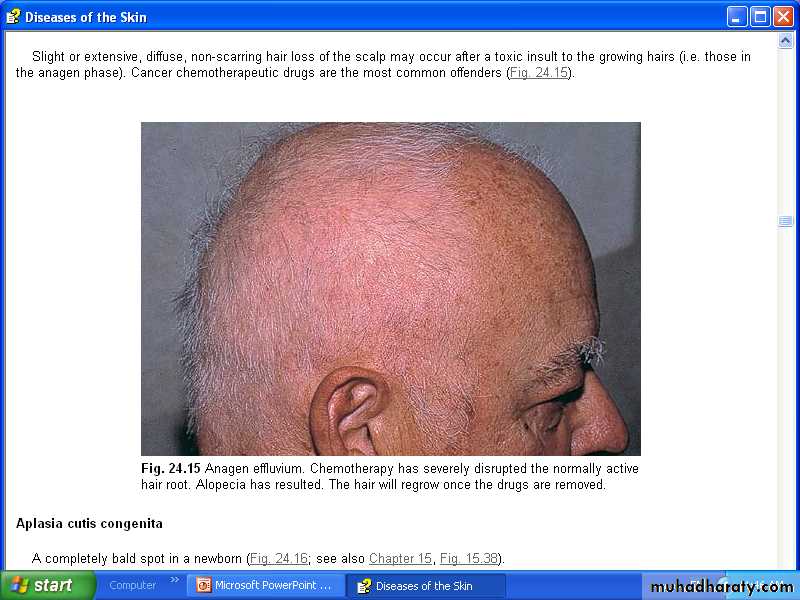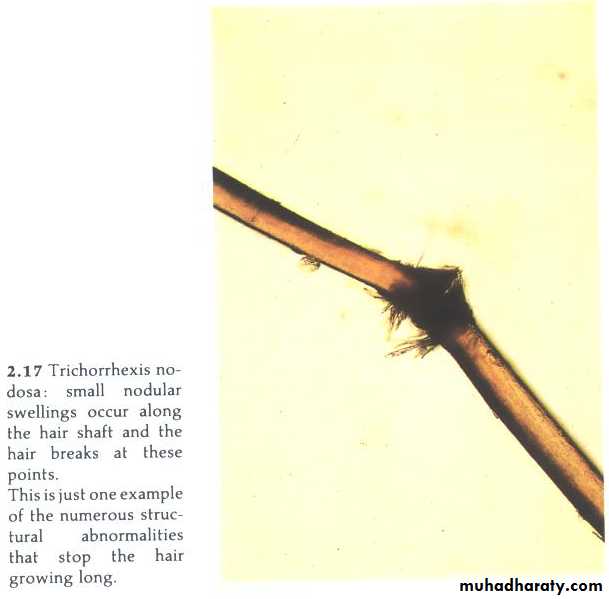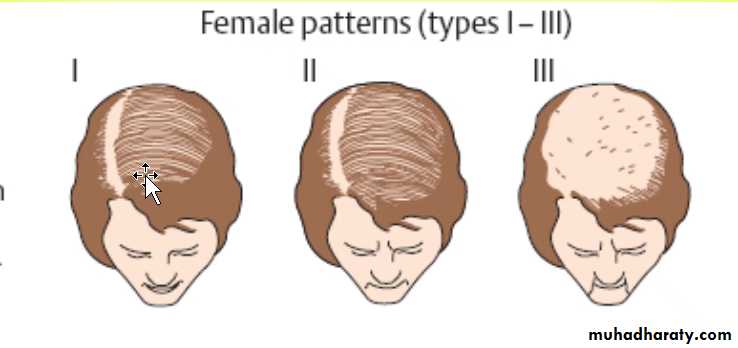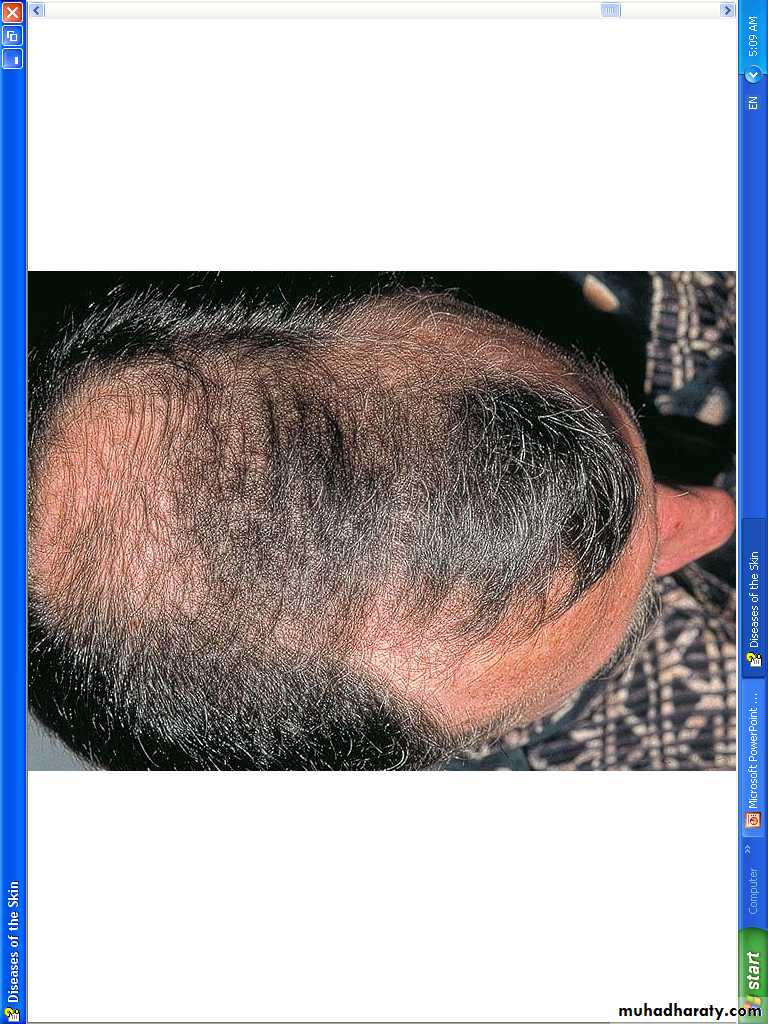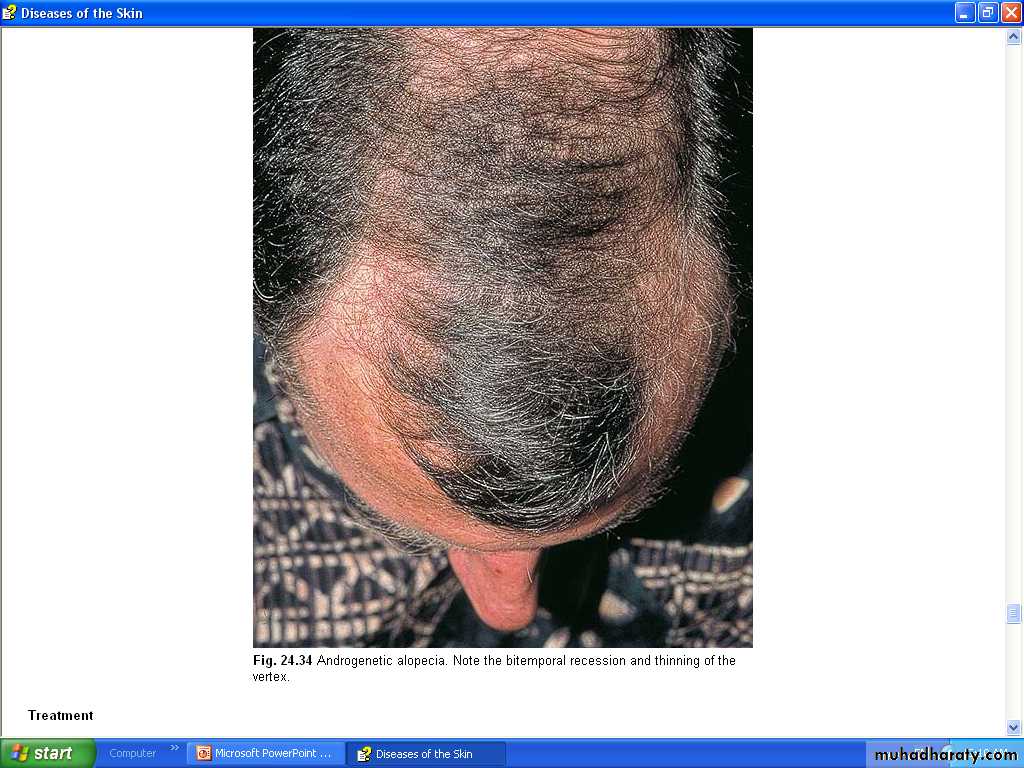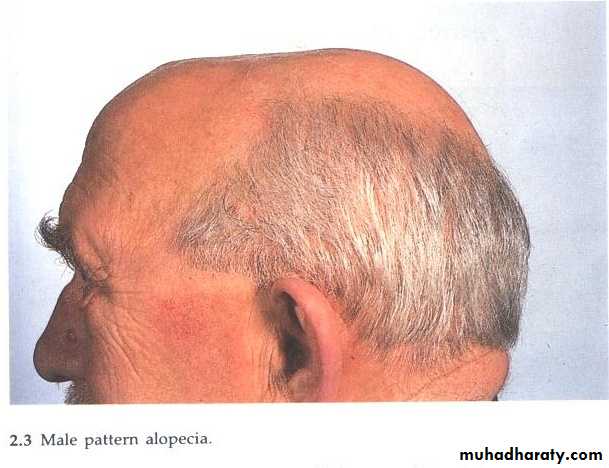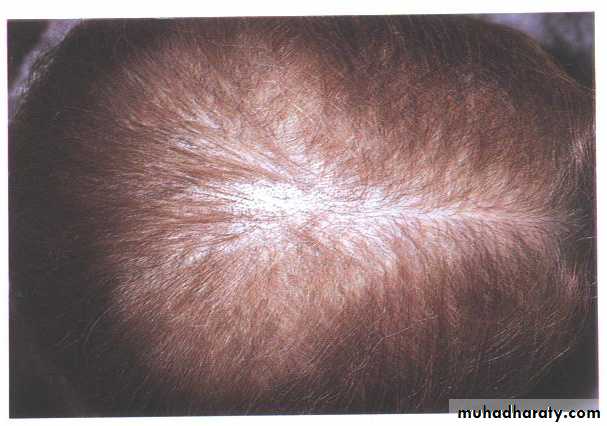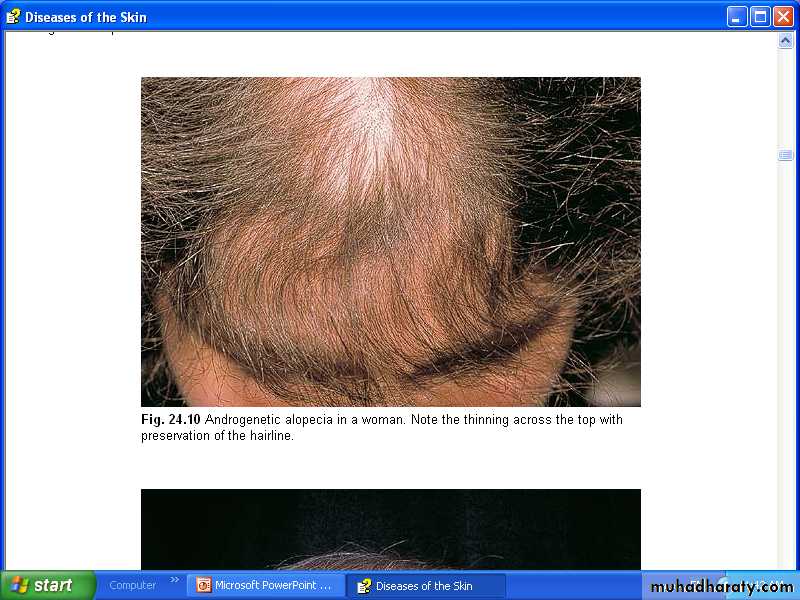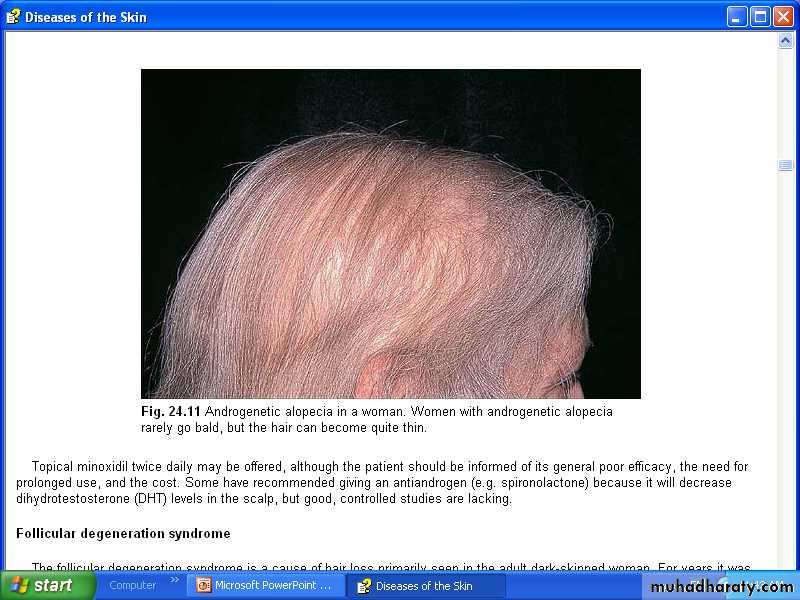Diffuse hair loss
Hair is lost evenly from the whole scalp + a thinning visible to others.Some of the most common causes are listed below, but often a simple explanation cannot be found.
1-Physiological
A- Normally 100-hair fall/day, a common cause.B- Neonatal, 3 months after birth.
C- Baldness, after age of 40years is a normal event inthe life of every male or female.
2- Androgenetic alopecia: discussed later.
3- Diffuse type of alopecia areata4- Congenital causes:
hypohidrotic ectodermal dysplasias
are a group of rare inherited disorders characterized by
sparse hair,
scanty sweat glands, and
poor development of the nails
and teeth.
5-Telogen effluvium:
can be triggered by any severe illness, by childbirth and by severe dieting.All of these synchronize catagen so that, later on, large numbers of hairs are lost at the same time.
The hair fall, 2–3 months after the provoking illness,
Regrowth, usually occurs within a few months.
This condition is unaffected by therapy, but patients can be reassured that their hair fall will be temporary.
6-Deficiency state:
iron, zinc, marasmus and kwashiorkor.7-Endocrine causes:
hypopituitarism, hypo- or hyperthyroidism,hypoparathyroidism.
8- Severe skin condition:
exfoliative dermatitis.9-Severe chronic illness:
lymphoma, leukemia.10-Drugs and chemicals:
antimitotic agents that stop the hair growth at the anagen phase causing diffuse hair loss few weeks later (anagen effluvium).Local ice pack application during therapy may prevent it.
Of the other drugs are anticoagulants, vitamin A excess, oral contraceptives, colchicine.
11-Hair shaft abnormalities
that result in fragile hair shaft fractured on simple trauma.12-Idiopathic:
it is true to say that often no cause for diffuse alopecia can be found.Androgenetic alopecia
Increased hair follicle sensitivity to androgens leading to change from terminal to vellus hair follicles .Cause:
Clearly familial. Polygenic inheritance with variable penetrance seems more likely, but it runs as autosomal dominant in some families.The hair follicles have increased androgen receptors as increased activity of 5-α-reductase type II (that change testosterone to the active form, dihydrotestosterone) leading to increased androgen sensitivity.
In females, androgenetic alopecia, with normal circulating androgen levels, is seen only in those who are strongly predisposed genetically.
Presentation:
Thinning of hair without scalp disease,In bald areas, terminal hairs are replaced by finer vellus ones.
There are two classic patterns1- “Male pattern”:
The common pattern in men is the loss of hair first from the temples, and then from the crown.2- “Female pattern”:
The hair loss may be much more diffuse, particularly over the crown, with preservation of hairline.
Clinical course:
Hair loss is rogressive, tending to follow the family pattern with some losing hair quickly and others more slowly.The diffuse pattern seen in women tends to progress slowly.
InvestigationsNone are usually needed.
In women, virilization may have to be excluded.
Treatment
Scalp surgery, hair transplants and wigs.
Topical application of minoxidil may slow early hair loss and even stimulate new growth of hair in a few cases. Small and recently acquired patches respond best. When minoxidil treatment stops, the new hairs fall out after about 3 months.
Anti-androgens help some women with the diffuse type of androgenetic alopecia.
Finasteride, an inhibitor of human 5-α-reductase type II, reduces levels of dihydrotestosterone. It may increase hair counts and so lead to a noticeable improvement in scalp hair. However, the beneficial effects slowly reverse once treatment has stopped.Next Lecture
Excessive Hair GrowthNail Diseases




